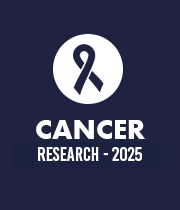Title : Chromatin accessibility landscape of pituitary neuroendocrine tumors reveals specific alterations and differentiates Cushing's disease
Abstract:
Objective: Cushing's disease (CD) is a debilitating condition caused by corticotropin-secreting pituitary neuroendocrine tumors, resulting in significant morbidity and mortality. Despite its clinical impact, the molecular mechanisms underlying the tumorigenesis of CD have remained poorly understood until recent years. This article aims to shed light on the molecular landscape of CD by presenting findings from a comprehensive analysis of open chromatin data and matched RNA-seq data in primary CD cases.
Methods: The research involved the analysis of open chromatin data and matched RNA-seq data from nine primary CD cases and adjacent peritumoral tissues. The study encompassed a thorough examination of both the overall extent and specific elements of accessible chromatin. Correlation analyses between open chromatin peaks and RNA expression were conducted, and transcription factors binding to accessible chromatin were predicted based on enriched motifs. The regulatory role of the Sp1 transcription factor, along with the effects of a Sp1 inhibitor on ACTH-secreting pituitary Npneuroendocrine tumor cell lines and murine models, were investigated.
Results: The research revealed a higher signal of accessible chromatin peaks in CD samples compared to peritumoral tissues, with a notable enrichment on promoter regions. The broadest open chromatin peaks were identified as key players in the dysregulation of gene expression associated with CD. Transcription factors, including NFY and Sp1, were implicated in the genesis of CD. Importantly, increased chromatin accessibility of genes by Sp1 was linked to elevated expression of oncogenic genes, enhanced cell proliferation, and increased ACTH secretion. Notably, the application of a Sp1 inhibitor demonstrated a reversal of these effects.
Conclusion: The research provides novel insights into the open chromatin features associated with CD, unraveling crucial aspects of its molecular landscape. The identification of key genes, regulatory pathways, and the involvement of transcription factors such as Sp1 opens avenues for targeted therapeutic interventions. The study suggests that Sp1 inhibition could serve as a potential treatment strategy for CD, offering hope for improved clinical outcomes and enhanced patient well-being.


